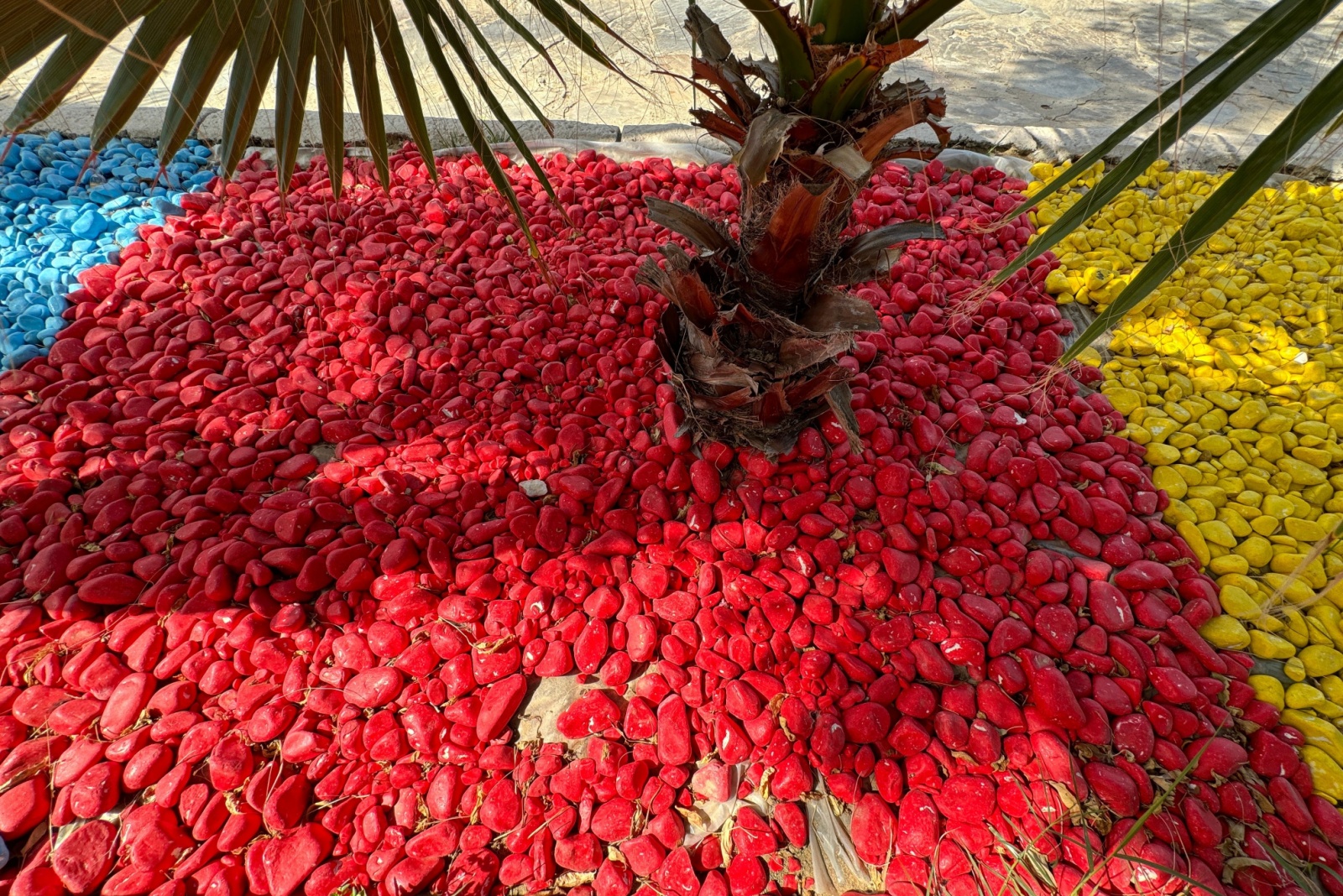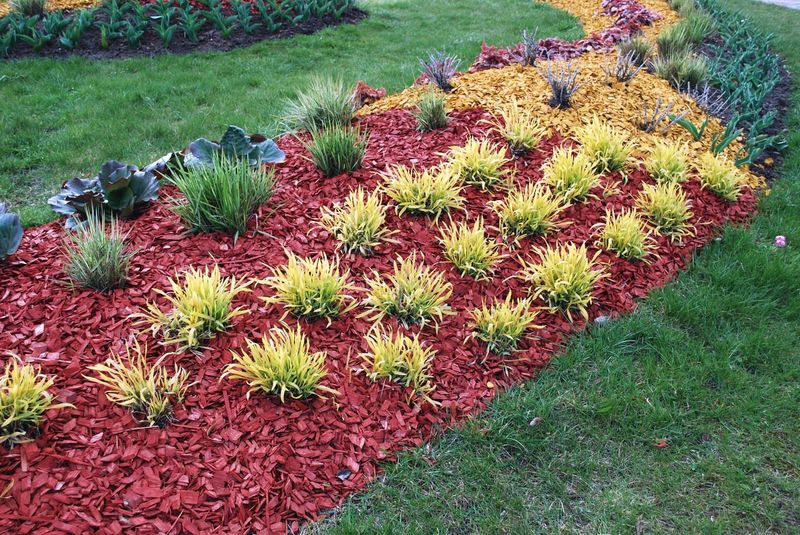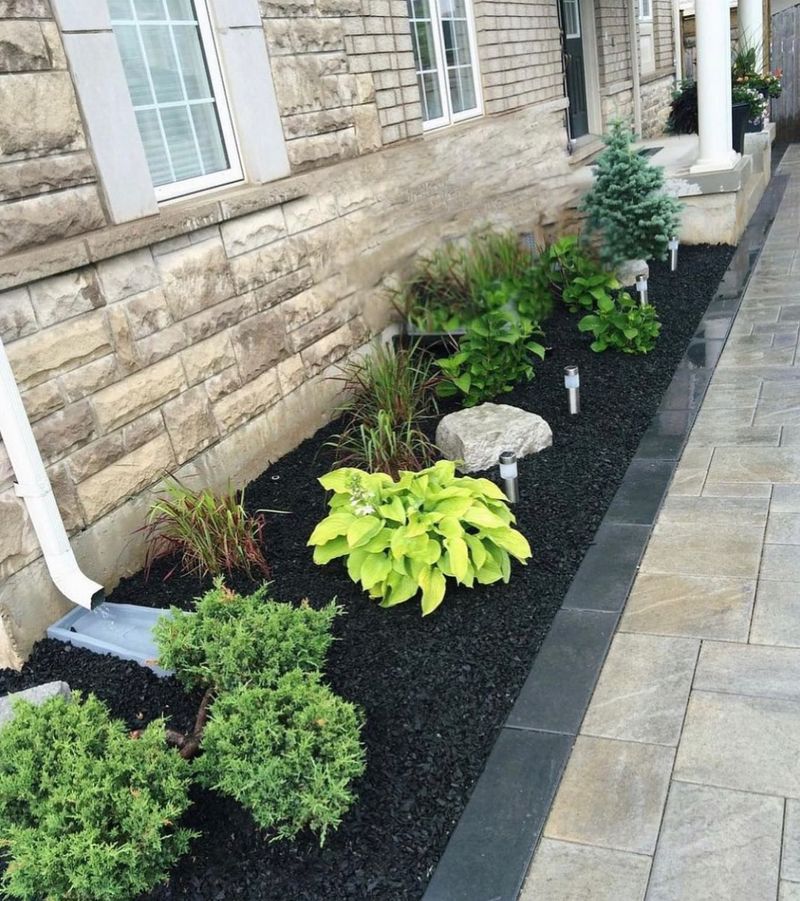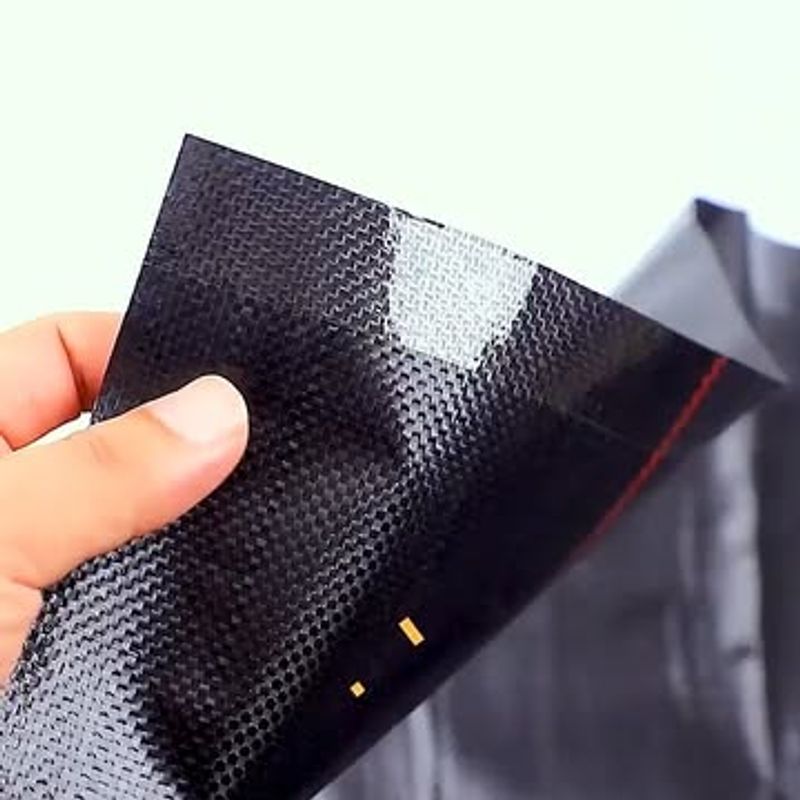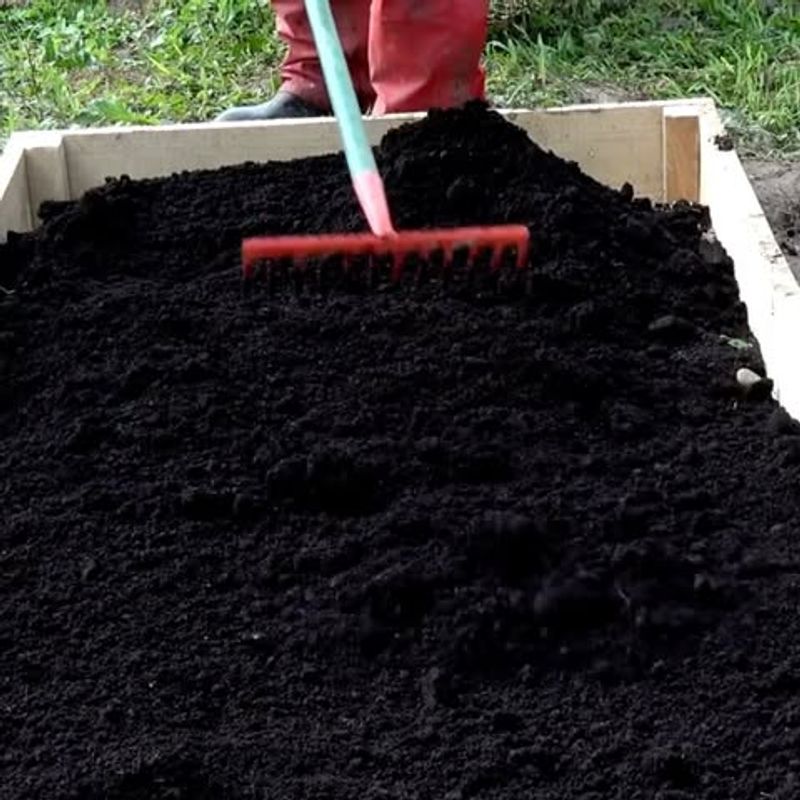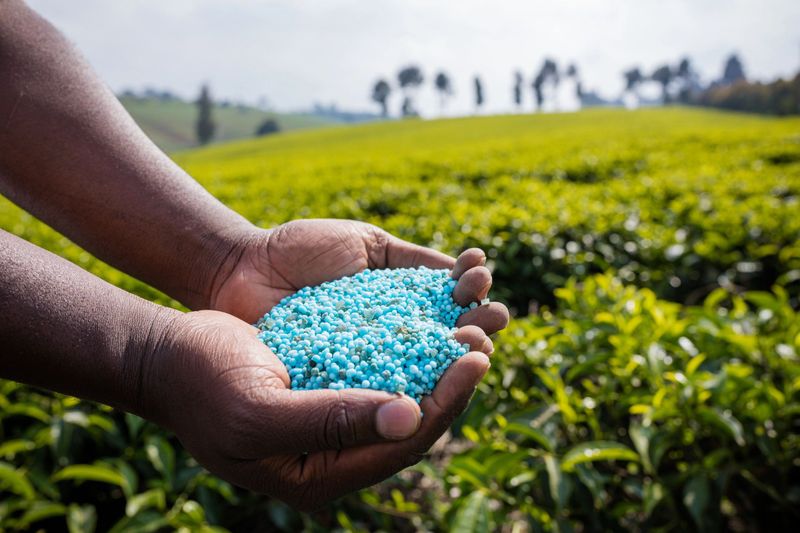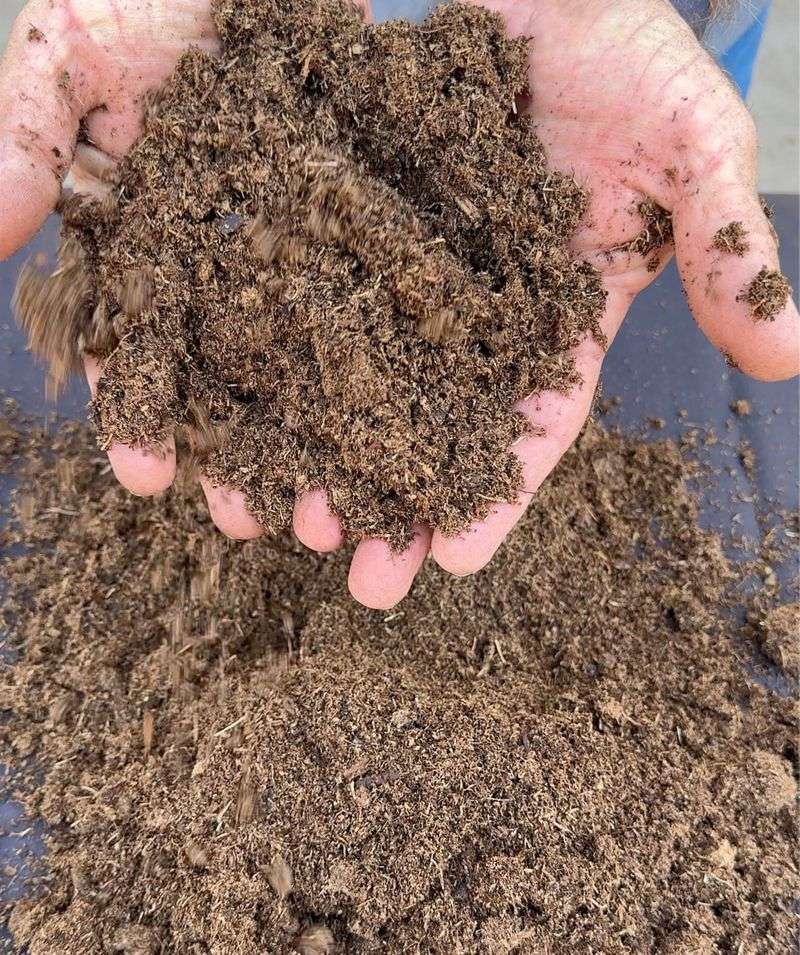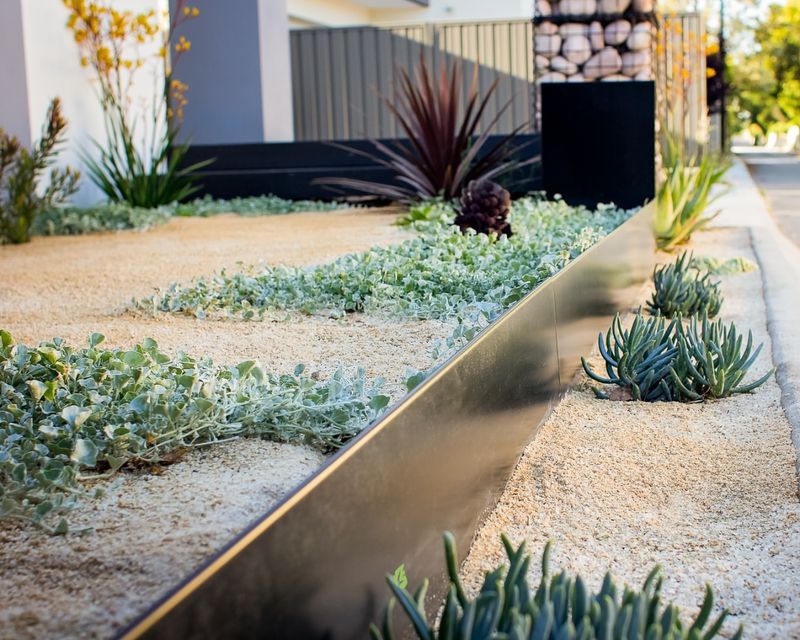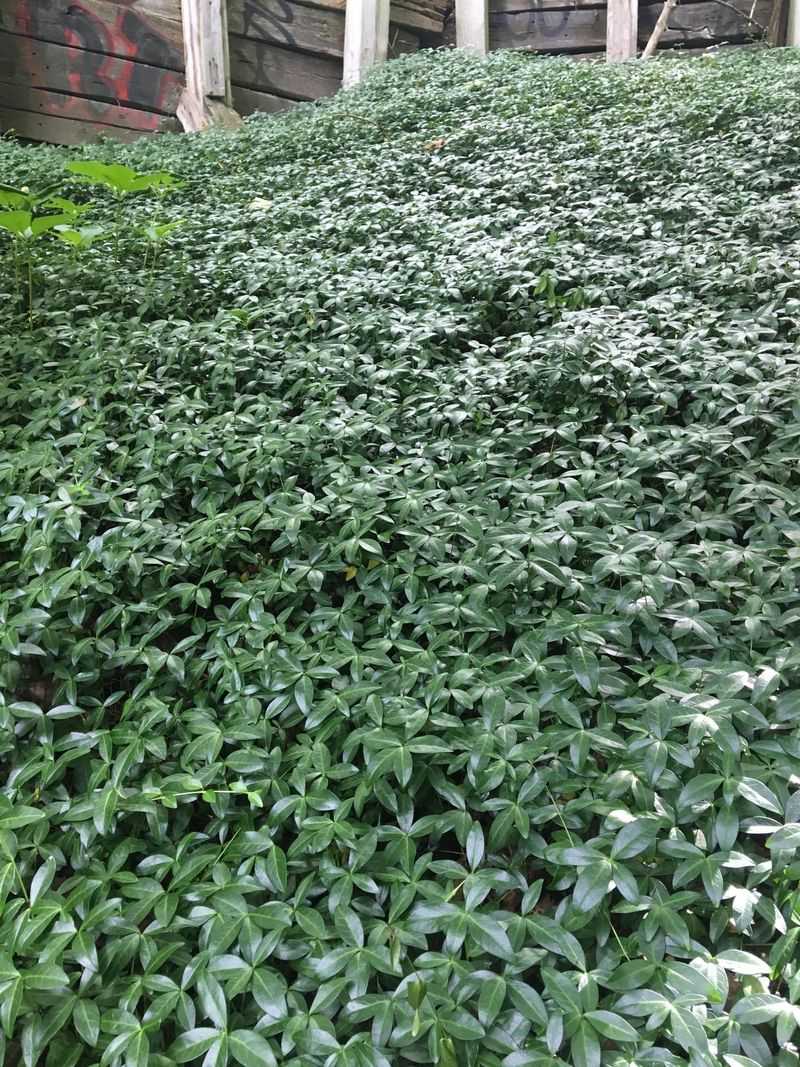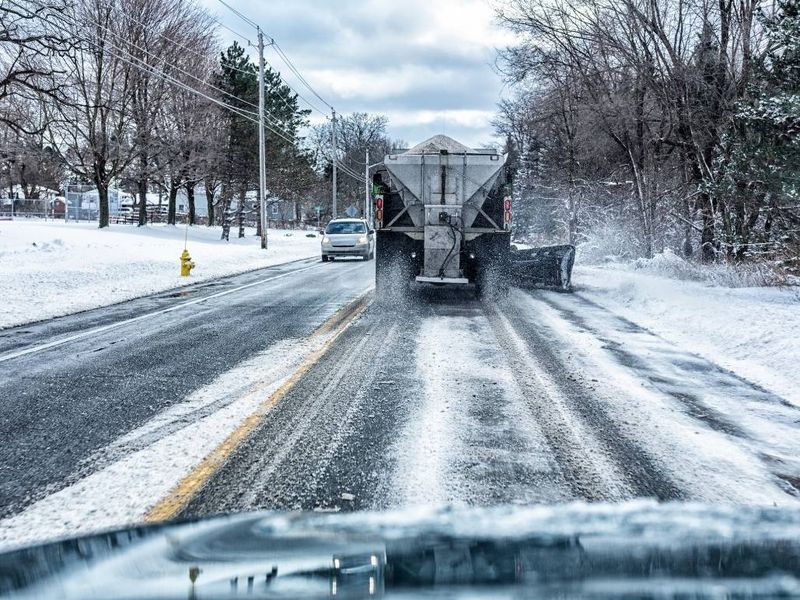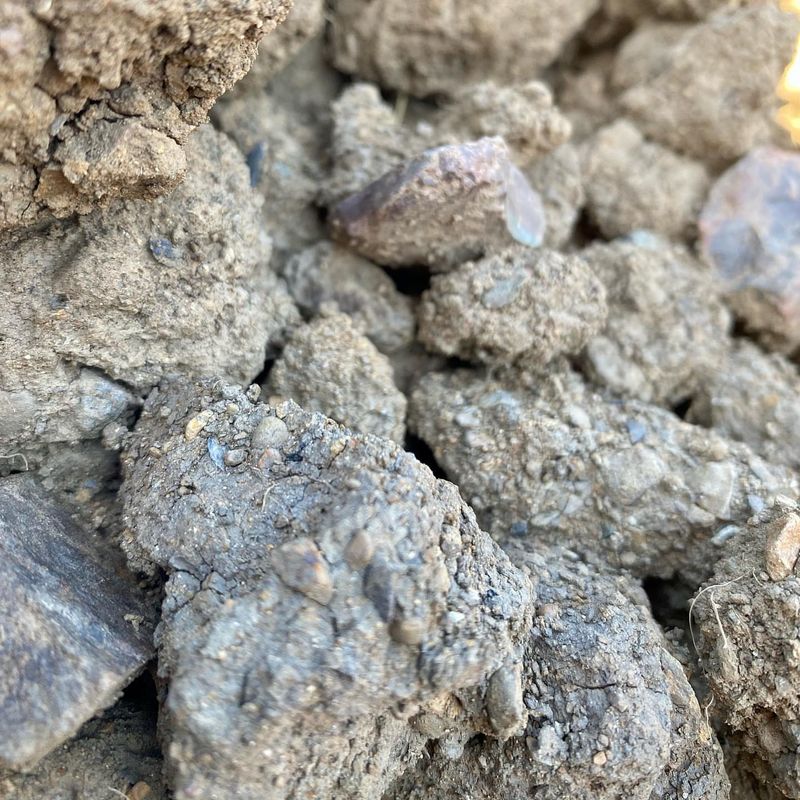Michigan gardeners face unique challenges when it comes to maintaining healthy soil. The wrong landscaping materials can destroy the delicate balance of nutrients, beneficial organisms, and proper drainage that plants need to thrive.
Understanding which common materials harm your soil can help you make better choices for your yard and garden’s long-term health.
1. Dyed Mulch
Vibrant red, black, or brown mulches might catch your eye at the garden center, but they’re silently harming your soil. These products contain chemical dyes and are often made from recycled wood pallets treated with harmful preservatives.
As they break down, they release toxins that kill beneficial soil microbes and can even leach into groundwater. Native Michigan plants particularly suffer when surrounded by these colorful but dangerous mulches.
2. Rubber Mulch
Playground-style rubber mulch has become popular in landscaping, but it’s a disaster for Michigan’s soil health. Made from shredded tires, this material leaches zinc, cadmium, and other heavy metals into your soil over time.
The rubber creates a barrier that prevents natural water filtration and soil breathing. Unlike organic mulches, rubber doesn’t decompose to feed your soil, leaving a long-term toxic legacy in your garden beds.
3. Plastic Weed Barriers
Those seemingly helpful plastic sheets marketed as weed barriers actually suffocate your soil. By blocking the natural exchange of air, water, and nutrients, they create dead zones underneath where beneficial organisms can’t survive.
Michigan’s freeze-thaw cycles eventually cause these barriers to break down into microplastics. Over time, they fragment and mix into your soil, creating pollution that’s nearly impossible to remove and disrupting the natural ecosystem.
4. Pressure-Treated Lumber
Garden beds framed with pressure-treated lumber might seem sturdy, but they’re quietly poisoning your soil. The chemicals used to preserve the wood—including copper compounds—gradually leach into surrounding soil.
Michigan’s acidic soils and frequent precipitation accelerate this leaching process. Vegetables grown in these contaminated beds can absorb these toxins, making them particularly concerning for edible gardens where you’re growing food for your family.
5. Synthetic Fertilizers
Quick-release synthetic fertilizers provide an immediate green boost but destroy soil health long-term. These concentrated chemicals kill beneficial soil microorganisms and mycorrhizal fungi that Michigan plants depend on.
The high salt content in synthetics damages soil structure, creating compaction issues. Michigan’s natural rainfall patterns often wash these chemicals into nearby lakes and streams before plants can use them, leading to harmful algae blooms in our precious waterways.
6. Peat Moss
Garden centers promote peat moss as a soil amendment, but its harvest destroys critical wetland ecosystems. Michigan actually has native peatlands that serve as important carbon sinks and wildlife habitats.
When used in gardens, peat moss can create overly acidic conditions unsuitable for many plants. It also dries out extremely quickly in Michigan’s summer heat, sometimes becoming water-repellent and causing drainage problems rather than solving them.
7. Crushed Limestone
Crushed limestone pathways may look elegant, but they can dramatically alter your soil’s pH. Michigan soils already tend toward acidity, but excessive limestone can swing the pendulum too far in the alkaline direction.
The fine dust from limestone pathways infiltrates surrounding soil over time. This pH shift disrupts nutrient availability for native Michigan plants that have evolved to thrive in slightly acidic conditions, leading to yellowing leaves and stunted growth in your garden beds.
8. Non-Native Invasive Ground Covers
Fast-growing ground covers like English ivy and periwinkle might seem like easy solutions for bare spots, but they’re silent soil destroyers. These aggressive plants form dense mats that prevent native seedlings from emerging and block water from reaching the soil.
Their shallow root systems fail to prevent erosion like native Michigan plants do. As they spread, they reduce biodiversity by crowding out native species that support local pollinators, ultimately creating a biological desert beneath their seemingly green carpet.
9. Road Salt Contaminated Snow
Piling road-cleared snow onto garden beds seems convenient during Michigan’s long winters, but it introduces devastating salt levels to your soil. The sodium chloride breaks down soil structure and creates toxic conditions for most plants.
Salt-contaminated snow also contains road pollutants like oil and heavy metals. Michigan’s clay soils hold onto these contaminants for years, creating long-term damage. The salt can also kill beneficial soil microorganisms that are essential for healthy plant growth.
10. Construction Sand
Using construction-grade sand for drainage might seem smart, but it creates more problems than it solves. This coarse material creates an abrupt soil interface that actually prevents proper water movement between soil layers.
Michigan’s heavy clay soils particularly suffer when mixed with construction sand. Instead of improving drainage, it creates bathtub-like conditions where water pools above the sand layer. The sand also lacks nutrients and organic matter, creating dead zones where beneficial soil life cannot thrive.

